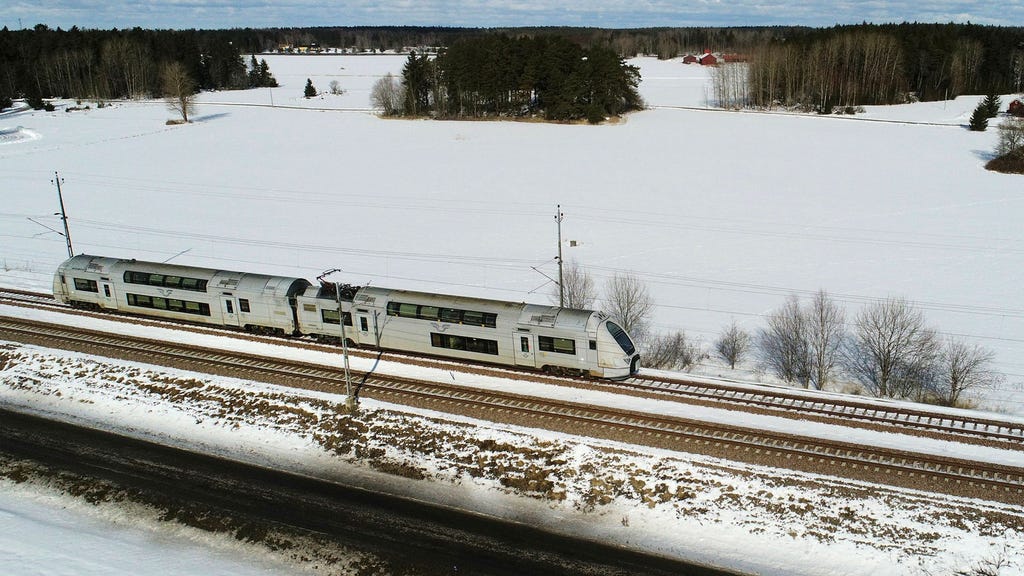The Swedish national railway operator, SJ, has announced the cancellation of several train departures between Stockholm and Gothenburg for the second consecutive day due to ice formation on the overhead power lines. This unusual weather phenomenon has disrupted the critical rail link between Sweden’s two largest cities, causing inconvenience for thousands of passengers. SJ’s press communicator, Johannes Cleris, explained that the ice accumulation prevents the trains from drawing power, effectively immobilizing them. While de-icing operations are underway, the process is complex and time-consuming, leading to the continued disruption of services. The cancellations underscore the vulnerability of electric rail systems to extreme weather conditions, especially the rapid freeze-thaw cycles that can lead to heavy ice buildup.
The situation has created a cascading effect on travel plans, with passengers scrambling to find alternative transportation. While some have opted for bus services, others are facing significant delays as they await the resumption of train services. The disruption also impacts freight transport, potentially affecting supply chains and businesses reliant on timely deliveries. SJ is working diligently to restore full service, but the unpredictable nature of the ice formation makes it difficult to provide accurate estimates for the return to normal operations. The company is advising passengers to check the latest travel updates before heading to the stations and is offering refunds or rebooking options for those affected by the cancellations.
The Swedish Transport Administration (Trafikverket) has clarified that the railway line between Stockholm and Gothenburg is not entirely closed. While one track remains open, the reduced capacity significantly limits the number of trains that can operate. This partial closure necessitates careful coordination between SJ and Trafikverket to prioritize passenger and freight traffic. Trafikverket is also actively involved in mitigating the ice formation issue through various measures, including deploying specialized equipment to remove the ice and applying preventative coatings to the power lines. However, the effectiveness of these measures is dependent on weather conditions, which remain challenging.
The incident highlights the growing need for resilient infrastructure that can withstand the increasing frequency and severity of extreme weather events, often attributed to climate change. While traditional methods of ice prevention and removal are effective in many situations, the current situation demonstrates the need for further innovation and investment in technologies that can better protect critical infrastructure from such disruptions. This could include developing more robust overhead power line systems, advanced de-icing techniques, and improved weather forecasting capabilities to anticipate and prepare for such events.
The economic impact of these disruptions is significant, affecting not only the transportation sector but also various industries reliant on efficient rail transport. The delays and cancellations incur costs for both passengers and businesses, highlighting the importance of investing in preventative measures and robust contingency plans. Learning from this incident is crucial for developing more effective strategies to mitigate the impact of future weather-related disruptions and ensure the continued reliability of critical infrastructure. Further research and development are needed to identify and implement innovative solutions that can enhance the resilience of transportation systems in the face of climate change.
Beyond the immediate operational challenges, the situation underscores the broader societal implications of climate change and the need for a more proactive approach to adapting to its effects. The increasing frequency of extreme weather events, such as the ice formation impacting the Stockholm-Gothenburg railway, necessitates a shift in perspective from reactive response to proactive planning and investment in resilient infrastructure. This includes not only strengthening existing infrastructure but also exploring alternative transportation solutions and promoting sustainable mobility practices. Addressing the root causes of climate change remains paramount, but adapting to its inevitable consequences requires a concerted effort from governments, industries, and individuals to ensure the long-term sustainability and resilience of critical infrastructure and transportation systems.














